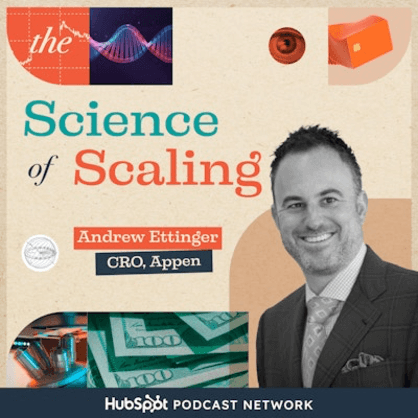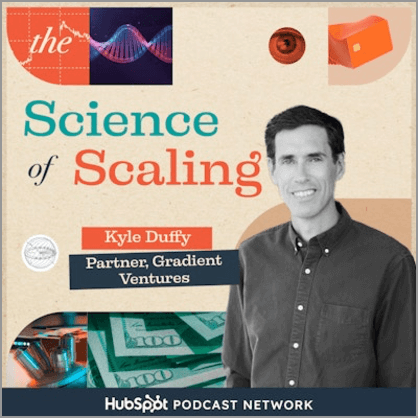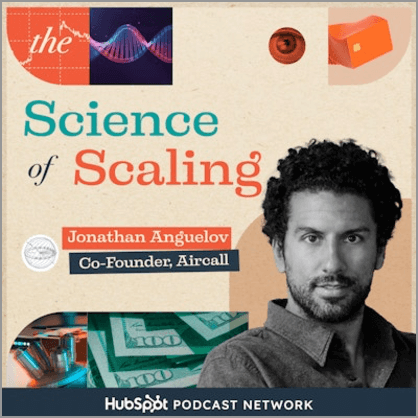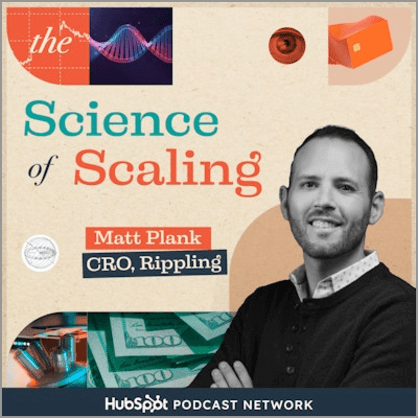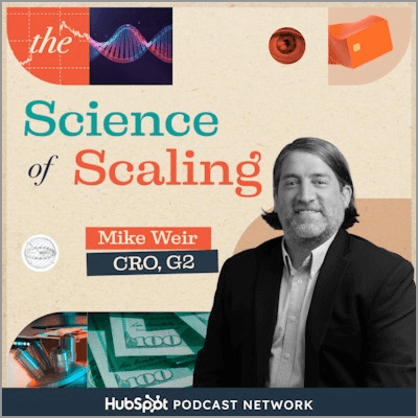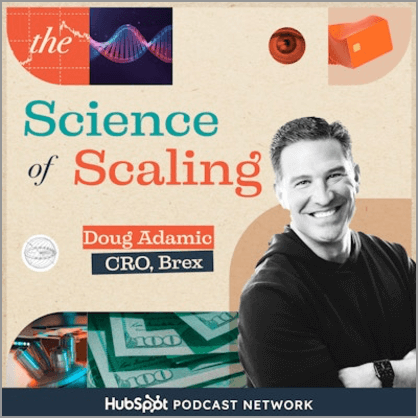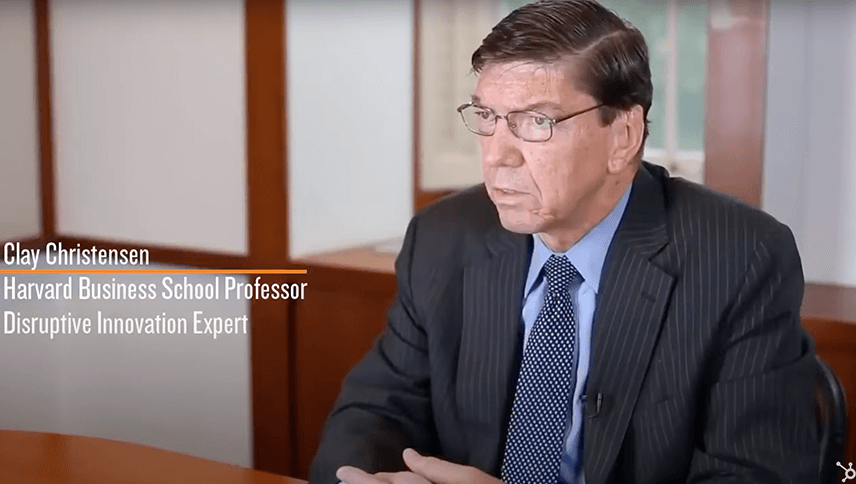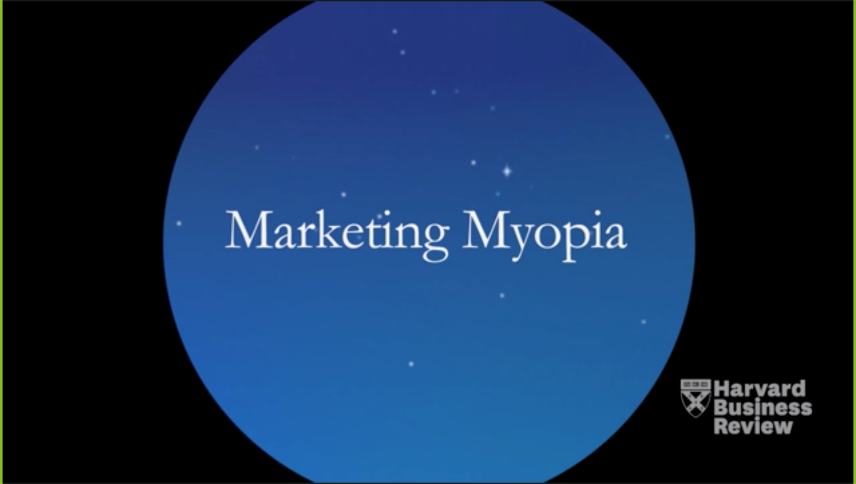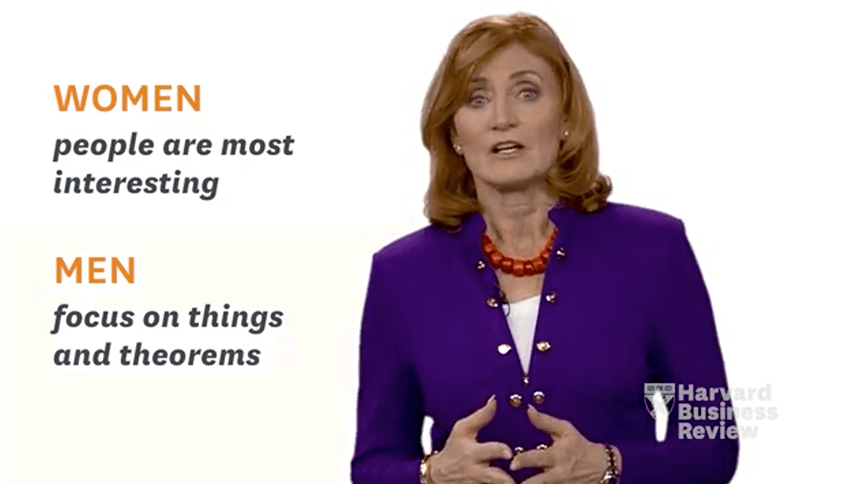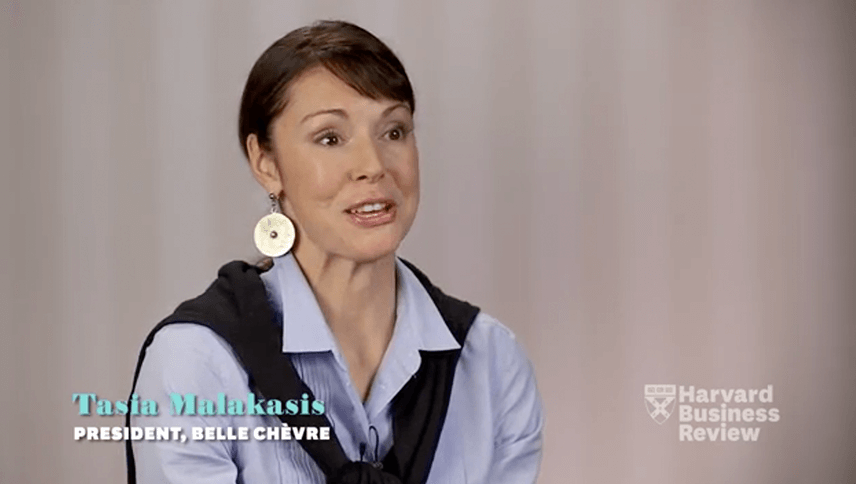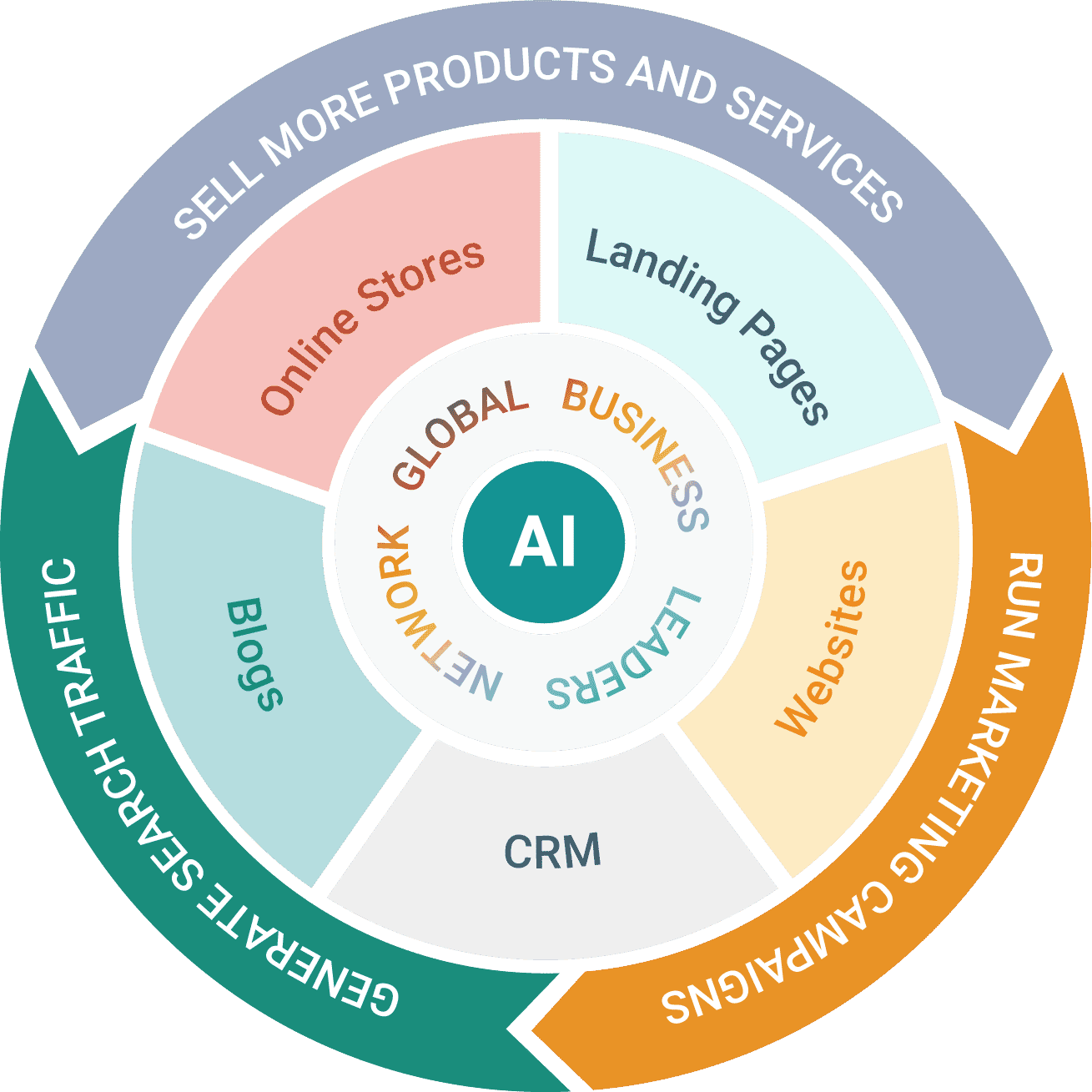The Funnel and Revenue Math
Matt Plank CRO, Rippling
Nov 20, 2023
Mark Roberge: Hi, folks. Welcome to the Science of Scaling podcast. I’m your host, Mark Roberge. In this podcast, we discuss the science of scaling by tapping the top executives on the go to market side in the most successful companies. Today we’re joined by Matt Plank, the CRO of Rippling, a household name that you’ve probably all heard of.
Matt spent their six years almost since the beginning when they only had five engineers. He met the co founder, Parker, at their last play, Zenefits. And they’re going for it again. Today, we’re specifically going to unpack the funnel and revenue math, a key piece to scientific scale that so many boards, so many executive teams, so many CROs miss.
This was crucial to Matt’s ability to scale them through. The last six years, and he’s going to unpack it for us on this episode. Let’s get right into it. Congrats. I mean, what an amazing run over there, Rip Lane. And can you just take a step back and tell us about the beginning? How big were they when you started?
Like, how did you get introduced to them? Can you walk us through that?
Matt Plank: Yeah, I’ve known Parker for, I guess, about a decade now, but I worked with Parker actually early on at Zenefit. So I was the 25th employee at Zenefit, second account executive, went on a run there and for the, about four years, and then followed Parker over to Rippling.
And when I joined Rippling, they were actually five employees in the basement of Parker’s house over in the, uh, the mission here in San Francisco. So, uh, It was Parker, myself, a small group of engineers and as early as it gets in terms of the early days. That’s amazing.
Mark Roberge: So was the go to market strategy the same, you know, it was a similar sector value prop, similar buyer.
And you all at Zenevitz, I mean, you all grew like crazy. Was it just a cut and paste on the go to market strategy?
Matt Plank: You know, one of the things that we were. Extremely committed to figuring out at Rippling from a, from a go to market channel was email. You know, when we started at Zenefits, email was, was not nearly as widely used as a, as a channel as it became.
And I think, you know, at Zenefits, um, you know, Marketo and Parda and all these things were not, you know, outreach sales loft, like none of those things existed, I think Yesware was the first one we ever ended up using in the sales org. But marketing automation was kind of new at that time. And so we found a way to write, I think, you know, highly effective emails, but also like getting them delivered was not really a problem.
I mean, it was easier to tweak the system. And then what happened was over the past 10 years, emails become just significantly harder, but of course, like any good growth channel, like everybody ends up using it. And then it becomes, I think marketing, you’re constantly looking for new creative ways to do stuff because anything that you do that works, like everybody does it and then it doesn’t work anymore.
And so we were really effective at email. We built a massive, like what we would call an inbound sales org, meaning that, you know, it was, we were sending emails, but the demos were just getting put on a rep’s calendar. So the reps felt like it was inbound. So when we started at Rippling, it was way harder, you know?
And the first question was how do we get our emails delivered to people? And some of that is you write emails that they, that are good, right? So they don’t think that this is immediately spam and I hate this email. It’s not relevant to me. Why’d you send it? So you got to make sure you’re targeting the right people and your message is compelling.
But then there are a lot of technical ways that you need to deliver email. You can’t just fire a million leads into, you know, Marketo and send away like your, your domain and everything will get flagged super quickly. And so it was a tough go. I don’t think it was tougher than we thought it would be, but we were deeply committed to solving that problem.
Like in the early days of Ripley.
Mark Roberge: Hey folks, just Mark here. I stopped the tape with Matt. Yeah, you see this a lot with different demand gen channels. Let’s take this in a very abstract way. A new marketing method gets invented. People are figuring it out. Word gets around. It has this beautiful moment where it’s just performing.
And then everybody does it and it gets saturated. Whether we’re talking about cold calling when the phones were invented, direct mail whenever like the catalogs came out decades ago. Email marketing, when that came out, content marketing, paid ads, whatever. They’ve all had that cycle. And that’s something that Matt’s pointing out here is, very similar product, very similar value proposition, very similar buyer.
And yet, it’s a different time. Generally speaking, the demand gen tactics that they used at Zenefits. Couldn’t be replicated at Rippling and they had to evolve that. Let’s hear from Matt
Matt Plank: how they did it. And I would say for the first 12 months, you know, so 2017 through like the end of 2018, we were constantly Iterating on how do we get email marketing to work?
I mean, we went through so many iterations of how do you get it to work? Like one of the ways that you get email marketing to work that you wouldn’t, wasn’t natural to me. I had never done this before was buying high quality leads. And so we ended up buying leads and building the database. And if you buy crappy leads, then you’re going to get a bunch of poor deliverability.
And then like all of that stuff around email can actually really impact you long term. And so we were just banging away at the problem for months. Yes. We approached it from an engineering problem and like a systems problem and just a lot of creativity until I feel like we finally found something that worked and is honestly scaled all the way until really today.
I don’t get the connection between marketing and engineering. Like, can you unpack
Mark Roberge: that?
Matt Plank: Really it rippling all the way through to our product, the way we think about our product, the way that we think about marketing, you know, the SDR function, you know, we look at everything that humans do. That’s really cool.
And we think to ourselves, like, how could we automate this, right? What is a scalable way that we could automate this? Because obviously anything humans do is limited. One of the things that we do really well is we look for people who are like changing jobs, right? You know, if you’re changing job from one company to a new company, you’re highly likely to be more open to looking at a new system.
And so there are ways to do that manually. And then there are ways to do that that are engineering focused. Like, how do you go get the job changes from LinkedIn and all these different sources that do that? No, it’s a cool design. It’s um, I think it’s
Mark Roberge: better than most on the B2B. There’s never a design that doesn’t have its disadvantages.
And I would guess that in that case, it’s like, okay, the growth engineering team is a major contributor to demand gen, which ultimately is probably owned by the CMO, but the growth engineering team reports to the CTO. So how does that like work where it’s like the CMO might have a tough month or a tough quarter and they’re like, well, The growth engineering team didn’t do their job and they don’t report to me.
So it’s not my problem.
Matt Plank: Yeah. Yeah. It’s a good question. And you’re right that the, you know, I’ll even throw you one more layer into that, which is, you know, the SDR function rolls up to me. And so the SDR function actually owns like the output of what we, what we call, you know, S1s and S2s, so scheduled demos and accepted demos.
Uh, and so the SDR function owns the number from a quota perspective. The marketing org definitely owns the S2 number from like, uh, this is the metric that we deliver on. So we share that metric, uh, it’s separate reporting structure. Then you have growth engineering. Uh, who obviously is, you know, if growth engineering doesn’t do something or falls off for a week or a month or whatever, like for sure the S2 plan is not going to get hit, right?
Like there’s a critical component of the team.
Mark Roberge: And Matt, you got to back up for a second and define S2. I know it’s, it’s not a Rippling only, but it’s like not as well known. So just back us up
Matt Plank: there. So for us. Okay. Thanks. The way I think about it is you’ve got a lead, right? You know, marketing’s job is to serve leads at the end of the day, an MQL, marketing qualified lead to an SDR, right?
And then the SDR needs to turn the marketing qualified lead for us. But we would define into an S1, which is a stage one opportunity, which is a scheduled demo. And then from there, a stage two, an S2 is an accepted opportunity. From the sales rep, right? So marketing gives the SDRs leads SDRs, then turn those leads into schedule demos at some conversion metric.
That’s very important to us. And then from there, the like S1 to S2 is the acceptance rate of the AE, right? And AE might do, you know, uh, whatever 30 demos a month that are on their calendar scheduled, and they might only accept like 75, 80 percent of them that they actually pull into their pipeline downstream.
And at the end of the day, like S2s are what matters, right? Like leads matter. S ones matter, but really like accepted into the pipeline sales qualified opportunity, like that’s the metric that everybody, you know, measures against in terms of pipeline building and we know how much revenue, how much pipeline we need to give to an account executive and all that kind of stuff.
Mark Roberge: Yeah, this is great stuff, Matt. And as I’ve been speaking to you, you’re way ahead of the game, I think relative to your peers on the ret, what I’d call the revenue map. Especially on the demand gen side. So let’s take some time to unpack what you’re talking about here. And let’s start when, when it’s the right time to start.
Like, cause I can’t imagine you walked in, there’s five engineers. You’re the first kind of like business hire, first sales hire. You weren’t like maniacally measuring MQL to S one to S two. Like when, when do you move to that? Yeah.
Matt Plank: I think one of the most impressive charts or, or graphs if you will at rippling is, you know, there’s this graph that, imagine there’s two lines on a bar graph that are essentially like, how many S twos per rep do we do per month, right?
And so if you’re an SMB or mid-market or enterprise, like that’s a, but it’s essentially like how many, you know, sales accepted demos. Do you do for a month? And for the longest time, really six years running, like the way that we capacity build every year, some very core centric part of the capacity model is like, how many demos do we need to give a rep?
And so let’s just take a mid market rep, for example, right. Who has like, obviously a certain OTE, a certain quota. And over time, you know, when we were a smaller company, mid market reps would be doing literally like 35 S2s a month, like 35 accepted demos a month. Uh, which is insane to think about like where we’ve come.
And so each of the last years over the past five years, that number has gone down, down, down, down. And the amount of revenue that a mid market rep closes has gone up, up, up, up. Right. And that obviously happens from like increasing your win rate and increasing like your ACV. Like those are really the two metrics that.
If you increase those, then, you know, you don’t want to raise someone’s quota to infinity. Like at some point, quotas are high enough for the, for the unit economics to make sense. And what you actually want is like more reps. Like if you’re doing 35 demos a month per rep, you’re leaving meat on the bone, right?
Like you can’t be efficient in that world. And so, but when, when you’re early and you’re a startup and you don’t have any, you know, you, you’ve got funding, but like, it’s different. You are trying to give as many demos as you can to a rep and have them close as much as they possibly can. And even if, you know, like for example, if you have 35 demos going to one rep, right.
And let’s say that they close, you know, 15 deals. If you were to create a second rep, so you take those same 35 demos, you create a second rep. So now you’re doing, you know, 17 and 18 demos each. Like you’re going to close more than 15 demos as a total, right? Like the conversion is going to go up. Like they’re obviously working, you know, they’re able to like, uh, work, you know, follow through on a lead, work it harder, follow up more, all that kind of stuff.
But it might not make sense for your business because like, you might not be able to afford two people, right? It depends on like, what’s the revenue that they’re producing. Hey
Mark Roberge: folks, just Mark here. All right. This is step number two that Matt’s outlining. And that is to get sales capacity to equal demand gen capacity.
It’s two sides of the formula. I have a salesperson. This is what I think they can produce with their 40 hours of work each week. But there’s a second half of the formula, which is there’s demand that I’m going to feed them. And he’s walking us through that. Like right now, that demand represents 35 opportunities a month.
And that rep is turning that into 10 deals. Obviously, if we add a second rep, those two reps will probably get more than 10 deals from those 35. Opportunities, but is it going to be large enough to still make the math work? The demand gen side has to equal the sales capacity side, and we can’t increase the sales capacity side unless there’s sufficient demand gen capacity.
All right, let’s unpack that even more and get back to Matt.
Matt Plank: And so when you’re early, you tend to stuff like too many opportunities on a single person. At some point you realize like more reps make sense here. There are certainly other companies who are like, you know, add a bunch of reps in a spreadsheet, put a quota on top of them, there’s my revenue plan.
And yet they have no idea how they’re going to get the demos or how they’re going to increase the demos. They think that hiring reps equals getting more demos. You know, that’s not true. And in my experience,
Mark Roberge: Oh, it’s brilliant. I mean, like kudos to you for being a thought leader there. So there’s so much to unpack there.
How do I know even what’s good?
Matt Plank: Yeah.
Mark Roberge: How do I know what my. MQL to S1 ratio should be, and how many should be given and what’s acceptable.
Matt Plank: Yeah. So, you know, this is actually really, really interesting because rippling in the past six to eight months has spun up go to market teams in new countries. So we launched a go to market team in Canada.
Uh, you know, selling the companies headquartered in Canada, the UK, Australia, uh, Germany, and France are next. And so when we first started, even in a new market with five years of like all of this data, we’re, we’re kind of like, what, how many leads do we need? Like how many demos do they need? What are it?
Cause you don’t even know, you don’t know the ACV, you don’t know what the win rates are going to be. And so it’s literally felt like I was going all the way back to the roots of Ripley. And I’ll tell you like the number one most important place you have to start is, uh, like what does it cost to hire a rep and like what, therefore what does their quota need to be?
And like my rule of thumb is you want to get a five X quota on someone’s OTE, right? So if somebody is making, you know, 100, 000 a year, you want a 500, 000 quota. If they’re making 200, 000 a year as an OTE, you want a million dollar quota. Now that’s hard. And there’s a lot of companies who don’t sniff a five X return on OTE from a quota wallet perspective.
And so I think in, in newer markets and certainly Rippling did not start at five X, right? When we were first on, it’s probably three X, right? And you work your way from three X, three and a half, four, four and a half, five. And so in these new markets in particular, I think in a world today where efficiency is so much more important, uh, we aim for four X.
And so when we launched in Canada and the UK and Australia, We’re like, look, we know what we need to pay to get a high quality rep in these markets. Like that is what it is, right? That’s not a, if you got, I’m for us, we’re like pay top dollar, hire the best people. And so therefore it’s set. If you want to say, look, 4X is the benchmark we need, then you at least land on a quota where, you know, like, Hey, the business works at this number.
It’d be nice if it was 5X, but 4X, like we’re good. Hey folks, just
Mark Roberge: Mark here. Yeah, this is a good guidance from that. I might push it one more level. Okay. What he’s saying is. When he said cost to acquire a rep, he’s actually talking about how much you have to pay the rep. Okay, so you have to pay them like 150, 000 a year.
And he wants their quota to be 5x. Okay, so if I pay my rep 150, 000 a year, he wants it to be 750, 000 a year in quota. And that’s going to work out to be a good business. I think that’s really good. I want, I want to push you all to think about it at a deeper level. Cause for example, what if you have one rep that’s cold calling themselves and creating their own demand versus another rep that has this huge marketing team feeding them and a huge SDR team feeding them with appointments.
Obviously the unit economics would be much better for the rep that’s fulfilling their own demand. So it’s a little more complicated than that. And what you have to do is. Take it a deeper level than what Matt’s talking about and just add up all that cost. What is the quarterly spend on marketing? What is the quarterly spend on SDRs?
What is the quarterly spend on our account executives? And that’s the cost for a sale. And then you can do the same math to figure out what is the revenue and lifetime value from the sale. And now we can attach that back to Payback periods of 12 months or less, or LTV to CAC ratios of 3 to 1. You can Google those concepts.
These are common unit economics, but the bottom line is, is you need to have some sort of projection on your sales and marketing spend and some sort of projection on your sales and marketing output and make sure that the assumptions going into that math make sense and spit out strong unit economics.
That’s kind of what Matt’s saying. Okay. Let’s get back to him.
Matt Plank: And then you work back from there, the funnel metrics. Okay. So if it’s for, if this is the quota that I need, you know, um, you could start with making up ACVs and win rates, but to be honest, you don’t know what those are going to be. You have no idea what those are going to be.
And so I think another metric you can start with is like, what is the right amount of opportunity to give somebody or they have enough time to work the opportunity. Like at the end of the day, a funnel is very simply like how many opportunities, what’s the win rate? What’s the ACV? There’s a quota, right?
And so you take the bottom of the funnel, which is quota, and you take the top of the funnel, which is like the DS Tuesday can work. And then you kind of massage win rates and ACV to figure out like, how do you create a funnel that works? That’s repeatable and so forth. I love how simple
Mark Roberge: you made that. I want to actually push you one step further to actual numbers.
Cause I want to like, pretend like you’re advising someone that’s starting a business like Ripple, that you would have a funnel shape like that. You don’t have to give us the numbers, but just like. Hey Matt, you know, like I’m, I’m, I’m going to try to do what you did like in the last six years. Like, what should I do?
Like, what, what are the numbers?
Matt Plank: Yeah. So I’ll take an example. Let’s say that you’re, you’re hiring like an SMB rep at, you know, 150, 000 OT, you know, your quota really needs to be at least 600, 000 a year. Like for you to get 4x on the quota, right? So if your quota is 600, 000 a year, that’s 50, 000 a month, right?
Monthly quotas for as long as you possibly can forever if you can.
Mark Roberge: Yes. Yes. Stay on monthly quotas as long as you can. Okay. Now that doesn’t really Work if you’re selling a million dollar deals, but if you’re selling deals in the tens of thousands, yes, stay on monthly quotas. And here’s why every single company closes most of their business in the last 10 or 20 percent of their fiscal period.
So if you make your fiscal period a quarter, you’re going to have a slow first eight to 10 weeks of the quarter and a huge two weeks leading up to the end of the quarter, and you’re going to do that four times a year. If you make your quotas monthly, you’re going to have a slow two and a half to three weeks of every month and have a remarkable last week of the month, and you’re going to do that 12 times a year.
You want to do that 12 times a year. You want to lower the volatility by taking on more periods, so stick with monthly quotas as much as you can, even if your finance team and your board and your executive team Is marching to quarters, try to get the sales team to march to months. All right, let’s get back to Matt.
Matt Plank: So 50, 000 is a monthly quota. If you get a 50, 000, then, you know, like all day long, that’s great. Right. And so from there, let’s say, okay, I have a 50, 000 monthly quota that I need to get to. Uh, it totally depends on your market, obviously, like ACVs, whatever. But let’s just say, for example, um, that you’re going to give a rep 30 S2s a month, right?
So I give my rep 30 S2s a month. Let’s take a step back. Let’s say that our win rate or our ACV is 5, 000, right? So you have a 50, 000 a month quota. You have a 5, 000 average deal, right? Super transactional SMB. So if you’re going to do 30 demos a month, you need to win like 33 percent of them to get you 10 wins for an average deal.
Size of five K is going to get you to that 50 K number. So like, there’s your funnel, right? 150 K rep. Equals a 50 K quota per month. I need to get them 30 demos at a 30 percent win rate in a five K ACV. And my funnel math works. Now you might look at that and say, how am I going to give them 30 demos a month?
Right? Like that’s crazy amount of demos that I can give them. And that goes back to, um, if you can’t get them 30 demos a month, then you better find a way to get win rates higher or ACV higher. And what a lot of people will do is they’re like, I’m going to hire an SMB rep. I’m going to give them 10 demos a month, and then they’re going to go give me 20 demos, right?
On top of needing to like, win 30 percent of the deals and have the ACB and all that kind of stuff. And so you can really, I mean, every new segment we launch at Rippling, we honestly start the same way. We have probably 15 different. You know, go to market teams from direct SMB, you know, channel account and all this different stuff.
And they all start from the same equation of what’s the OT we have to pay, what’s the quota we need to get to.
Mark Roberge: I’m sorry. We’re out in audio podcast world right now. Cause we need a blackboard. If you’re in this spot that Rippling was in six years ago, rewind. About two minutes and start writing this stuff down.
And that’s a wonderful starting point for you to figure out how your go to market machines work. Okay. So thank you, Matt, for doing that. And now take us a year or two later. All right. So you got this dialed in right now. Now you’re running this beautiful machine. You have the sales capacity math on one side, which is your quotas and your cost of reps, et cetera.
You have the demand gen math on the other side with your S1s, your S2s, your conversions, your ACBs. Now you’re like, I don’t know, you’re two, three years later. You got dozens of salespeople. How does this play out? Like, how do you decide like if you should go lower on the opportunities? Yeah. How fast do you, how do you, how fast do you build the team?
How fast do you build the demand gen funnel? How does it all play out?
Matt Plank: Yeah, it’s a good question. So, um, let’s first. Actually kind of go further up the funnel to, to kind of answer that question. So, you know, you, you started with this quota you need to get to and, and ACV that you have and win rates to get you to like 30 S2s, right?
30 sales accepted opportunities that I’m working.
Mark Roberge: So there you
Matt Plank: go.
Mark Roberge: That’s it. He’s done it. That’s the demand gen formula. And yet so many boards, executive teams, ops teams, CROs, the extent of their planning is I need to do 5 million in revenue this year. My reps do 500, 000 each. I need 10 reps. Now there’s the other side.
That Matt just walked us through beautifully, and that is the demand gen math. They both have to work. It’s easier to add the reps. It’s harder to predictably get the demand gen to work, and you have to be confident in that before you add the reps to achieve the growth. Thank you, Matt, for walking us through that.
All right, let’s get back to them.
Matt Plank: The reality is, how are you going to get 30 opportunities? Right. And in the earliest days, the answer is, could be, and was for us for a long time, like email marketing. I’m going to email people to get 30 opportunities. And um, you know, in the earliest days of a company.
You’re not constrained by your TAM, right? If you sell into like rippling, you know, companies under a thousand employees, uh, you know, under 2000 employees, but let’s call it under a thousand. And in the early days, let’s call it under like a hundred cause that’s really what it was. And so there are just a, you know, in what feels like an infinite amount of under a hundred employee companies that you could sell to, right?
So you’re not TAM constrained. So in order for you to get 30 demos, like what is the constraint, right? And they constrain. Is how many, you know, accounts or contacts, let’s call it, are you going to email and what’s your conversion rate, right? If you have a 1 percent conversion rate, so you email a hundred people and you get one demo, then you need to email 3000 people to get 30 demos.
Right. And like emailing 3000 people is like, that’s too many people. Right. And so on one hand. I mean, it’s not too many people. And what people do is they’re like, Oh, great. I send 3000 emails. I get a 1 percent conversion. I get my 30 demos. Let me just go drop in 3000 emails into Marketo or Pardot or Outreach, whatever.
You do that for two weeks. And then they’re like, wait a minute. My domain shut down. I can’t, can’t send emails anymore. Right. And so in the early days, the constraint is actually, uh, like. Like, how many emails can you send and, and you know, you, you, and what’s your conversion rate? So getting that conversion rate from 1% to 2% to 3%, 4%, 5%, whatever.
That’s like the most important thing that you can do. That’s the way that we measure the SDR r work today. Because when you’re early and you’re sending emails and you, you can send a essentially infinity emails and get all the demos that you need at some point, you know, rippling is six years into the journey.
Uh, you know, 13, 000 customers, like at some point you become TAM constrained. You can’t send infinity emails anymore. Like you, you have a TAM, you, you’ve got a number of demos you need to set and you do the math and you’re kind of like, Oh, like my, my yield, I need to get on an account is much higher. Right.
And so then you think about, okay, well, how do I get. A higher yield from my activity. And like, it’s not just clickety click sending emails through, you know, some automated API, right? Like you’re never going to get a good enough yield to make your business work long term by doing that. And so we could go, you know, that’s really the, how you, how you, uh, you know, why and how you create like an outbound function, right?
Cause the outbound, you know, SDR outbound, or some people might do this in sales, I’m a firm believer in separation of duties, uh, I believe very strongly that SDRs. Uh, doing SDR stuff all day long are just going to like massively outperform a sales and account executive who’s, who’s trying to do that as well.
Um, and so you build SDR and SDR org so that they can do all of the other things, which are of course, email and phone calls and LinkedIn and all of the other creativity that you’ve seen pop up in the past five years. I think there’s a lot of people doing really cool stuff in the, in the SDR space or just general kind of outbound account based marketing, all that good stuff.
Um, And that you just kind of have to shift your whole entire world to like, you are constrained by TAM and you can’t just email everybody in the world, you know, every other month, like there are real constraints there.
Advertise: Talking Too Loud, hosted by Chris Savage, is brought to you by the HubSpot Podcast Network, the audio destination for business professionals. On this podcast, we’re talking about Chris Savage, Wistia’s CEO and loudest talker, takes you inside the minds of entrepreneurs as they share the hilarious, informative, and most challenging aspects of building more human brands.
You can hear episodes like building a reusable notebook empire with entrepreneur Joe LeMay or the AI video revolution with Wistia’s own head of production, Chris Levine. Listen to Talking Too Loud, wherever you get your podcasts.
Mark Roberge: That’s a key moment is like, you’ve, you’ve done something that few startups do when you actually crack the nut on one dimension, Jim, you’ve figured out you and you grew at some point to what you’re saying here, you saturate and you have to add a new one in. And in your case, it was email. And then you added in SDRs kind of cold calling.
Matt Plank: We did. We actually, unfortunately, we like. Missed the SDR step for a way too long.
Mark Roberge: I mean, yeah, they waited too long, but at least they caught it. That’s a really important learning from a planning standpoint. Once you start getting to rippling stage, you break out of that zero to one moment. You’re getting 5, million in revenue.
Planning has to start in August of the prior year. And you need to know what your current Demand gen channels can deliver. They will saturate. You will hit a TAM total addressable market saturation on that demand gen channel. And if you wake up in Q2 of that year and realizing it, you’re cooked on that year.
You can’t just be like, Oh, cool. Let’s start cold calling now. And that’s going to be productive next month. It’s not even going to be productive next quarter or in this year. You need to have started testing these alternative demand gen channels. In this case, cold calling or selling through partners or selling ABM, hopefully like a year before you need them so that when you come into the annual planning process and you need to grow by 20 million, and you realize that your email marketing program that you built is only going to get you 15.
You have the math on your little cold calling experiment and can expand it out to get the other five. You need to test those alternative demand gen channels. All right, let’s get back to Matt. Did you, so tactically speaking, do you still take the, do you take the inbound, the email marketing leads that you had forever?
Do you send them directly to the account executive or do you send them to an SDR that only deals with those? And then do you have a separate set of SDRs that does that? The account based selling and the cold calling, like how is that architected?
Matt Plank: Yeah, really, really good question. So, uh, yeah, that’s right.
So there’s basically three different, you know, um, kind of SDR semi functions or, or, uh, sub segments, if you will. The first one is inbound. So they’re dealing with form, form fills. Form fills are of course, like organic review sites, paid advertising, like anyone that clicks on a form fill falls into this bucket and there’s a big team of SDRs that just do inbound.
But for example, we used to not even call those people. We would send them an email, we’d send them like a three or four touch automated email sequence. And we would book a ton of demos doing that. But what do you know, when we started calling them, it was like we booked a lot more demos, right? Um, and so there’s the inbound team that we send a call.
We call them, I think within five, 10 minutes is the SLA. We schedule a lot of demos that way. Okay. Um, then we have our, uh, what we call kind of mechanized outreach. And so that team is essentially, uh, like, you know, higher volume kind of email distribution where we also follow up with like engaged people, but it’s not pure outbound.
It’s like, it’s, it’s a little bit of a hybrid. And then our third bucket is like pure outbound. And those are, you know, account based SDRs. They’re given a set of accounts, they, they kind of run it, run their outbound playbook against those accounts. And then any lead that comes in through any funnel, like if it’s a named account, it goes to that team.
So we’ve got pure inbound, pure outbound, and then we have a hybrid. But really all of our demos today, you know, 100 percent of our demos today are 99. 9 are from the SDR org. Our account executives and SMB mid market do not do any prospecting. Um, you know, we fill the calendar up. Uh, with those folks and their job is purely closing in our upmarket team and our kind of enterprise team.
Uh, there are some folks who are just doing inbound as well. And then there’s some folks who are now starting to sprinkle in outbound and they’re partnered with SDRs to kind of go after a named, you know, name set of accounts. But that, that evolution is shifting pretty dramatically. You know, through the next 18 months, as we think about today, Ripley is still around Robin based inbound company.
Like we don’t even have territories, you know, no geos, no industries. Uh, we round Robin across, you know, 200 plus reps. So that’s kind of wild. Um, we probably should have done that a while ago as well.
Mark Roberge: This is complicated. I’m feeling for Matt. I can sense that he’s living through this right now. And let me pull a couple of things out of here.
First off, He’s transitioning from round robin to something more territory oriented, extraordinarily common as you get into like the mid tens of millions. And what’s happened there is your brand has grown. And the difference between a cold outbound and a warm inbound is starting to feel similar. They know who you are.
And so you’re better off just putting people into territories and whether there’s inbound stuff coming in, or there’s cool calls that are happening. They’re going to go and hit their quota and that’s really common in the mid market and it’s even more common in the enterprise. And so I feel like Matt is hitting that transition period right now where he’s moving from what’s needed, what was needed as a multi channel scaling organization to a, what feels more like a single organization that’s in territories.
And those salespeople are making their territory number through a variety of demand gen methods. The other thing I kind of predicted Is there probably going to have to get their account executives to do some demand gen themselves to have some accountability that’s not fully reliant on SDRs or email, and it’s not running things through outreach or like 50 calls a day.
It’s more strategic. It might be calling on the closed lost opportunities. It might be doing some high personalization outreach, but I feel like that’s commonly needed at this time. Date to get to the next level. All right, let’s finish things up with Matt.
Matt Plank: So at some point we’ll, we’ll try to, you know, um, create never like zip codes.
I don’t think you need to go like zip code territories these days. I think it’s a, it’s a different world post COVID. Um, but some alignment, you know, today you’ve, you could have, um, a rep in California taking a demo from someone who lives in New York, like that doesn’t make a ton of sense. And so just trying to slot in almost like time zones or regions is probably, uh, you get some yield increase by just like aligning leads to reps and like, you know, a time zone would be a good start.
Haha.
Mark Roberge: This is amazing, Matt. Thank you so much for laying out the demand gen vision from like five engineers in a room all the way up to this crazy math that so few people do, but it’s so critical to getting the predictable scale on the growing market side that we’re all looking for. So, much appreciate you coming on and dropping some knowledge for us today, Matt.
Matt Plank: Yeah, you bet, Mark. I had a great time and I appreciate you having me on and all the good questions. I appreciate the chat.
Mark Roberge: Today’s episode is written and produced by Matthew Brown. Our show is edited by Pizza Shark Productions. Big thanks to HubSpot for Startups and to the HubSpot Podcast Network for keeping the audio on. Hey, also we’re a new show. So if you like what you hear, or if you hate what you hear, leave us a rating and review over on your favorite podcast player.
I love the feedback. Also check out stage two capital. We’re the first VC firm running back by over 500 CROs, CMOs, CCOs. So if you’re an entrepreneur looking to scale your business, check out stage two dot capital. All right, that’s it for today. I’m Mark Roberge. See you next week.
Source: https://youtu.be/dG3qeslNNWc?list=PLxEk_-9hb_F9UpZHfacUr9N3YbjnuKabX

